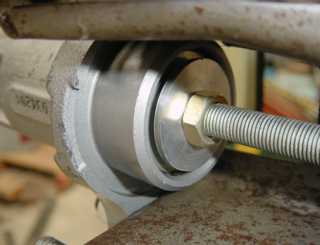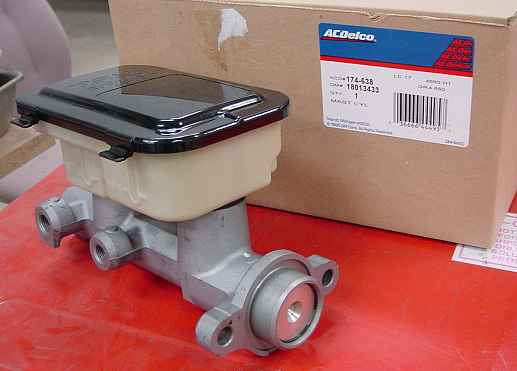
One of the big problems with the manual brake systems using stock sized rotors, is that it has very high pedal effort to stop, especially if the car has a big block engine or air condidioning. I have reports from manual brake 67 Camaro owners that they can't lock a front wheel while standing on the brake pedal! There is a good reason there were only 600 or so manual brake Camaros sold!
The manual brake option was only available in 1967 on a first gen Camaro. It used a 1" bore master cylinder similar to a manual brake Corvette. Power brake cars use a 1.125" bore with a worse pedal ratio, but the power booster adds enough pressure to still make the pedal effort lower than a manual brake car. I have heard some second gen Camaros were available with manual discs.
The four cyl S-10 1988 master cyl is 24mm (15/16") and has US threaded outlets. It was aluminum from GM but many aftermarket replacements are cast iron. It has the same bolt spacing and port sizes as the earlier cast iron Camaro master cyls, the firewall hole must be enlarged 1/16" from stock.
It is the "quick take up" type which was made for low drag brake calipers that retract the piston more than earlier calipers and require more fluid to be pumped back into the caliper when applying the brakes.There is a third larger bore piston in the rear that pushes extra fluid past the front piston seals. There is a pressure valve in the rear reservoir port that prevents fluid from the large bore from returning to the reservoir until about 100 psi line pressure is reached. This takes up the extra room between pad and rotor.
My idea was to find a smaller than 1" bore master cyl of this type and use the smaller bore to provide a higher line pressure to the caliper at an easier pedal effort level, and have less pedal travel.
These master cyls can be troublesome and are not liked by some people...

Here is a mockup of my idea to retain the Pushrod in the master cyl piston. I installed a threaded aluminum washer on the pushrod and used a jam nut behind it. In the photo, the S-10 Master cyl is mounted in the pedal assembly and the whole thing is on it's side. I think if I move the washer a slight bit closer to the piston, it will not have an opportunity for the rod to drop out of the piston. At full stroke forward, the top of the washer comes closer to the piston, so I have to watch the clearance there. I might even bend the washer rearward on top, or forward on the bottom to get a closer fit.
I used aluminum for the washer just in case the washer contacts the bore it will not damage it.
Don't ever use allthread for a brake rod, this is just for mockup use. Allthread is the weakest steel made. Grade Zero.
I plan on using a 3/8" fine thread grade 8 bolt, cut the head off and thread the end for the washer, or use a good grade stud.

I just checked a brake manual I have.
The large low pressure rear piston pushes fluid past the rear "primary" piston seal, - (this is the one that makes the high pressure). The front or "secondary" piston has two seals, one facing forward, the other facing rearward. The fluid forced past the primary piston seal pushes on the front secondary piston and moves it more, so the benefits of the large rear piston are seen at both front and rear outlet ports.
The only problem I can see, would be if using a large caliper displacement on the front port, the front (secondary) piston inside is actually being stroked pretty far, farther than a "normal" power brake piston, because in our application, a smaller bore 15/16" master is being used for easier manual brakes.
I would guess the front piston is stroking pretty close to max and if you got into a brake fade situation, you might hit bottom on the front piston! THIS WOULD OF COURSE, PREVENT FULL BRAKING OF THE FRONT BRAKES.
I'm not really really sure this would happen but there is much less, to no chance of it happening if the front caliper were connected to the rear port.